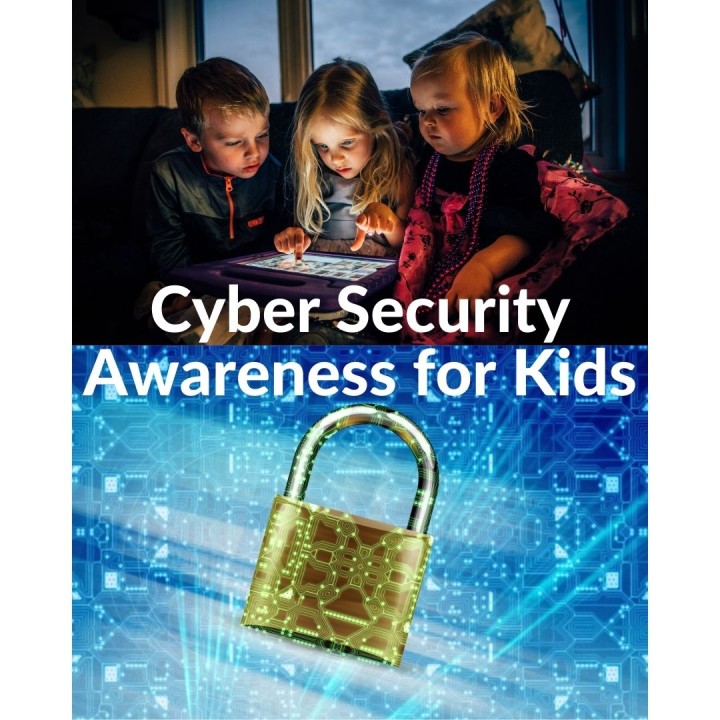In today’s digital-first world, children are exposed to technology at a young age. From online learning platforms to social media, gaming, and entertainment, kids are spending more time online than ever before. While the internet offers endless opportunities for learning and growth, it also comes with significant risks, such as cyberbullying, hacking, phishing, and online predators. Teaching kids about cybersecurity has become essential to safeguard them from these threats and ensure their digital safety.
This blog delves into practical ways parents and educators can teach kids cybersecurity in the digital age, helping them navigate the internet safely while building lifelong habits.
Why is Cybersecurity Education for Kids Important?
Children are inherently curious and often unaware of the dangers lurking online. Here are some reasons why cybersecurity education is crucial:
- Protecting Personal Information: Kids may inadvertently share personal details online, making them targets for identity theft or scams.
- Preventing Cyberbullying: Teaching kids how to respond to or report harmful online behavior can help prevent the negative effects of cyberbullying.
- Avoiding Scams and Phishing Attacks: Children are often tricked by fake websites, emails, or pop-ups. Awareness can prevent such incidents.
- Building Responsible Digital Habits: Early education fosters an understanding of ethical and safe internet usage, reducing future risks.
How to Teach Kids Cybersecurity
1. Start with the Basics
Introduce children to the concept of cybersecurity in simple terms they can understand. Explain what the internet is, how it works, and why staying safe is important. Discuss basic concepts like passwords, privacy, and the risks of sharing information online.
- Example: Use analogies like comparing passwords to locks on doors. Just as we don’t share house keys with strangers, we don’t share passwords with others.
2. Emphasize the Importance of Strong Passwords
Teach kids to create strong, unique passwords for their online accounts. Encourage them to use a combination of uppercase letters, lowercase letters, numbers, and special characters.
- Tip: Introduce the concept of passphrases, such as “MyDogLovesPizza!2025,” which are easier to remember and more secure.
3. Teach Them About Personal Information Protection
Explain what constitutes personal information, such as their full name, address, school name, phone number, and photos. Make it clear that this information should never be shared online without parental permission.
- Interactive Activity: Create scenarios where kids decide whether to share information or not. For instance, ask, “If someone online asks for your home address, what would you do?”
4. Educate About Recognizing Scams and Phishing
Children need to understand that not everything on the internet is true. Teach them to spot red flags, such as suspicious emails, pop-ups promising prizes, or links from unknown senders.
- Rule of Thumb: Encourage them to ask a parent or guardian before clicking on any unfamiliar link or downloading anything.
5. Discuss Cyberbullying and Online Etiquette
Cyberbullying is one of the most common online threats kids face. Teach them how to identify bullying behavior, report it, and not engage in such activities themselves.
- Golden Rule: Remind them to always be kind online and treat others with respect, just as they would in real life.
6. Use Kid-Friendly Cybersecurity Tools
There are many apps and tools designed to teach kids about cybersecurity in an engaging way. Some popular ones include:
- Interland by Google: A fun, interactive game that teaches kids about internet safety.
- Kiddle: A kid-friendly search engine that filters inappropriate content.
7. Monitor and Guide Their Online Activities
While teaching cybersecurity, parents and guardians should also monitor their child’s online behavior. Install parental controls and set boundaries for screen time and internet usage.
- Tip: Create a “safe list” of websites that are appropriate for children and explain why others may not be safe.
8. Introduce the Concept of Digital Footprint
Kids should understand that everything they do online leaves a digital footprint. This includes posts, comments, and even the websites they visit.
- Teach Them: “Think before you post” and ensure they understand that once something is online, it’s hard to remove completely.
9. Simulate Real-Life Scenarios
Role-playing is a great way to teach kids how to handle online situations. For instance:
- If someone they don’t know messages them, what should they do?
- How should they react to a suspicious link or pop-up?
Simulating these scenarios helps reinforce the right responses.
10. Keep the Conversation Going
Cybersecurity isn’t a one-time lesson—it’s an ongoing conversation. Regularly check in with your kids about their online experiences and remind them about safety practices.
- Pro Tip: Share news stories or examples of cybersecurity breaches (age-appropriate) to emphasize the importance of staying safe online.

Key Cybersecurity Rules for Kids
Here’s a quick guide for kids to remember:
- Never share your passwords with anyone, not even friends.
- Don’t share personal information online.
- Think before you click—be cautious of pop-ups and unknown links.
- Always log out from shared devices.
- Report any suspicious or uncomfortable interactions to an adult.
- Be kind online—don’t post or share hurtful comments.
Cybersecurity Education for Different Age Groups
Ages 5–8:
Focus on basic internet safety rules and identifying trusted adults. Use games and activities to make learning fun.
Ages 9–12:
Introduce concepts like phishing, scams, and strong passwords. Teach them about privacy settings on social media platforms.
Ages 13 and Above:
Discuss advanced topics like digital footprints, safe online shopping, and recognizing fake news. Encourage them to think critically about the information they consume online.
How Schools Can Help
Schools play a critical role in teaching cybersecurity. Including cybersecurity as part of the curriculum ensures all students learn about online safety. Schools can:
- Conduct workshops on cybersecurity awareness.
- Use interactive tools and games to teach online safety.
- Collaborate with parents to create a holistic approach to digital safety.
Final Thought
As technology continues to evolve, so do the threats associated with it. Teaching kids cybersecurity in the digital age is no longer optional—it’s a necessity. By starting early and making it an ongoing conversation, parents and educators can empower children to use the internet safely and responsibly.
Remember, a safe digital experience begins with awareness. Equip kids with the knowledge they need to navigate the online world confidently and securely.
FAQs
Q1. What is the right age to teach kids about cybersecurity?
You can start as early as age 5 by introducing basic safety rules and build on their knowledge as they grow.
Q2. How can I ensure my child’s online activities are safe?
Use parental controls, monitor their internet usage, and teach them to recognize online threats.
Q3. What are some common cybersecurity risks for kids?
Cyberbullying, phishing, identity theft, and inappropriate content are common risks children face online.
By teaching cybersecurity early, you’re not just protecting your kids today but also preparing them for a safer digital future.
Related posts:
 Best Cybersecurity Measures in 2025: Protecting Your Digital World
Best Cybersecurity Measures in 2025: Protecting Your Digital World
 Impact of Blue Light & Screen Time on Eye Health and Sleep | Digital Wellness Tips
Impact of Blue Light & Screen Time on Eye Health and Sleep | Digital Wellness Tips
 Unlock Hidden Phone Features: Tips to Optimize Your Device Storage
Unlock Hidden Phone Features: Tips to Optimize Your Device Storage
 Why Late Middle Age is So Important: A Transformative Phase of Life
Why Late Middle Age is So Important: A Transformative Phase of Life
 Real-Life Cyberattacks: Lessons and Remedies to Protect Your Digital World
Real-Life Cyberattacks: Lessons and Remedies to Protect Your Digital World
 Best Foods for Rainy Season – Monsoon Diet Tips for a Healthy Life
Best Foods for Rainy Season – Monsoon Diet Tips for a Healthy Life
